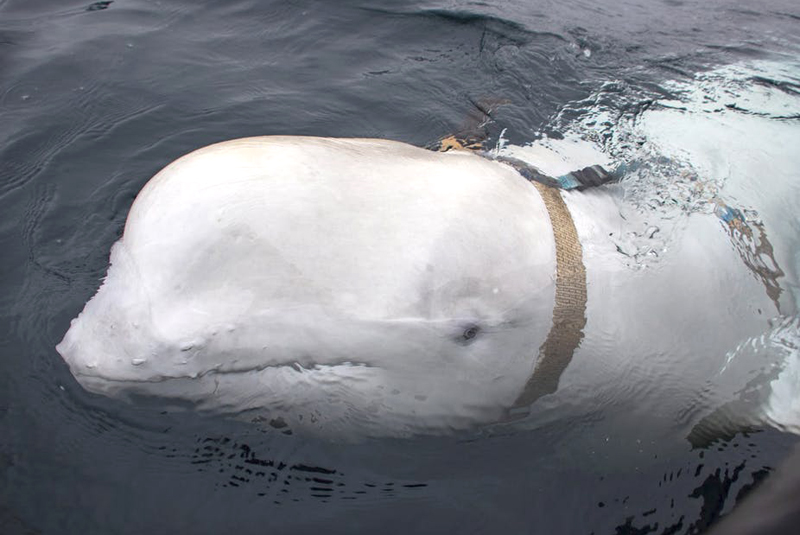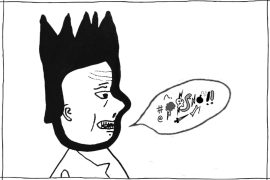The death of a spy is rarely newsworthy due to the secrecy surrounding it. But when a white beluga whale suspected of spying for Moscow was found dead in Norwegian waters in September, the animal soon became a minor celebrity.
Hvaldimir (a play on the Norwegian word for whale, hval, and the first name of Russian president) was even given an official autopsy by the Norwegian Directorate of Fisheries.
The whale had been uncovered as a spy in 2019, and is one in a long line of animals which have been used by the intelligence services. Among them was a Soviet programme to train marine animals as spies and assassins, which collapsed in 1991.
The US ran similar experiments with animals, some dating back to the 1960s. One of the CIA’s more unusual attempts to use animals as spies was Operation Acoustic Kitty.
The idea was to implant a microphone and antenna into the cat and use it to eavesdrop on potentially interesting conversations. The test of the “prototype” went horribly wrong when the cat wandered off and was run over by a taxi, leading to the programme being quickly abandoned.
The history of spy pigeons
A more successful example was the use of spy pigeons. Equipped with tiny cameras, pigeons could easily access otherwise restricted areas and “take photos” without arousing suspicion before safely returning to home base using their extraordinary homing ability.
What became a very successful CIA programme during the cold war took its inspiration from British efforts during the second world war.
Over time, technology created opportunities to exploit the stealthiness of animals while eliminating their unpredictability. Project Aquiline aimed to create a bird-like drone fully equipped in the style of more traditional spy planes, but smaller and more versatile so it could get closer to its targets.
Another, even more miniature version was the insectothopterthat the CIA developed in the 1970s. Although neither the aquiline or insectothopter designs ever became fully operational, they are acknowledged as forerunnersof today’s drones.
Fast-forward to the 1990s, and the CIA’s robotic catfish Charlie emerges as one in a longer line of successfully operationalised underwater drones that are more effective and less vulnerable than the hapless Hvaldimir.
Exploding rat carcasses
But effectiveness is not always best measured in the success of an unusual spy method.
A British second world war plan to use explosive-filled rat carcasses and distribute them to boiler rooms in German factories where they would then explode once shoved into a boiler appeared to be doomed when the first consignment of about 100 dead rats was intercepted by the Germans.
But the discovery of the rats, and the sheer ingenuity behind the plan, led to such paranoia that the “trouble caused to them was a much greater success … than if the rats had actually been used”.
While working with animals often proved problematic, attempts to gain advantage by disguising devices as inanimate objects have also proved a source of embarrassment. One such effort involved the MI6 station in Moscow trying to improve on the “dead letter drop” technique of obtaining secret information from spies in Russia.
Rather than risk leaving secret information in a pre-arranged location, MI6’s version of James Bond’s Q came up with the idea that the information could be transmitted electronically to a receiver hidden in a fake rock placed near the ministry in question which could then be downloaded by a subsequent walk past.
The focused activity of many men in suits in one part of this park, however, led to the discovery of the rock. The revelation of the operation in 2006 caused massive embarrassment to the UK government. That this was not MI6’s finest hour was suggested by headlines ridiculing the Moscow spy-rock as “more Johnny English than James Bond”.
While intelligence organisations are always looking for innovative means to enhance their spy craft, arguably the most successful application of intelligence comes in the form of human improvisation. A notable example of this was the clandestine extraction of Oleg Gordievsky in 1985 after the cover of one of the west’s most valuable double-agents working for British intelligence was blown.
A useful bag of crisps
The team of two British diplomats and their wives had to negotiate three Soviet and two Finnish checkpoints. As the first guard dog approached, one of the party offered the sniffing Alsatian a cheese and onion crisp, duly taking the Alsatian off the scent of Gordievsky who was hiding in the boot of the car.
When another dog began sniffing at the boot, a most ingenious and successful method of spy craft was brought into play. The wife of one of the diplomats placed her 18-month old baby on the car boot, changed the baby’s nappy, and then dropped the freshly filled and steaming deposit on the ground, successfully distracting the dog and its handler.
These actions were never part of the extraction plan for Gordievsky but were an equally instinctive and ingenious improvisation by those used to operating in hostile environments and practised at deceiving the unwanted attentions of enemy agents.
Expensive research budgets and promising technological advances provide an edge in certain circumstances, but the most effective spy techniques may still rely on the application of quick thinking and bold, fearless action.
This story was first published in The Conversation.
-30-
Copyright©Madras Courier, All Rights Reserved. You may share using our article tools. Please don't cut articles from madrascourier.com and redistribute by email, post to the web, mobile phone or social media.Please send in your feed back and comments to [email protected]











